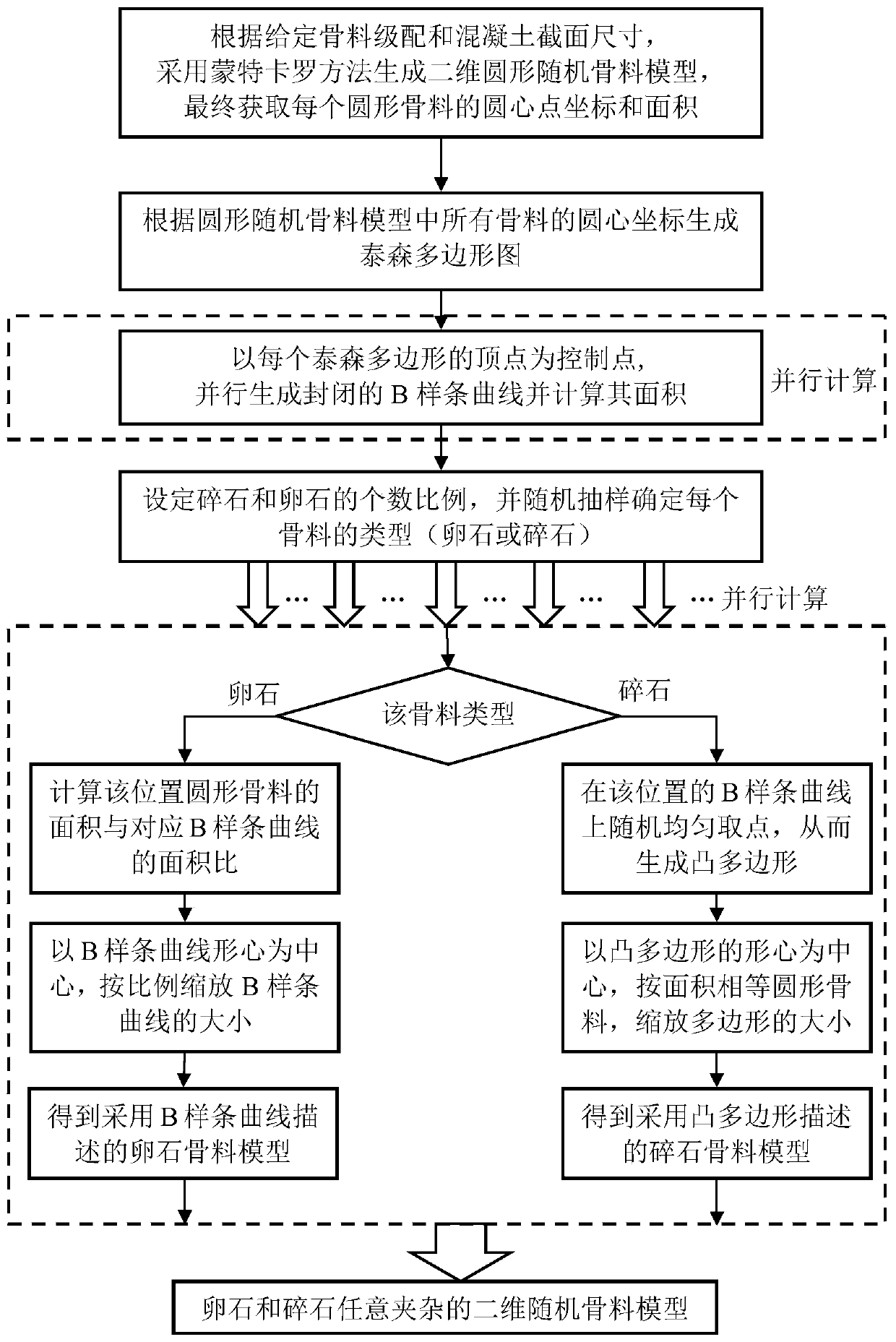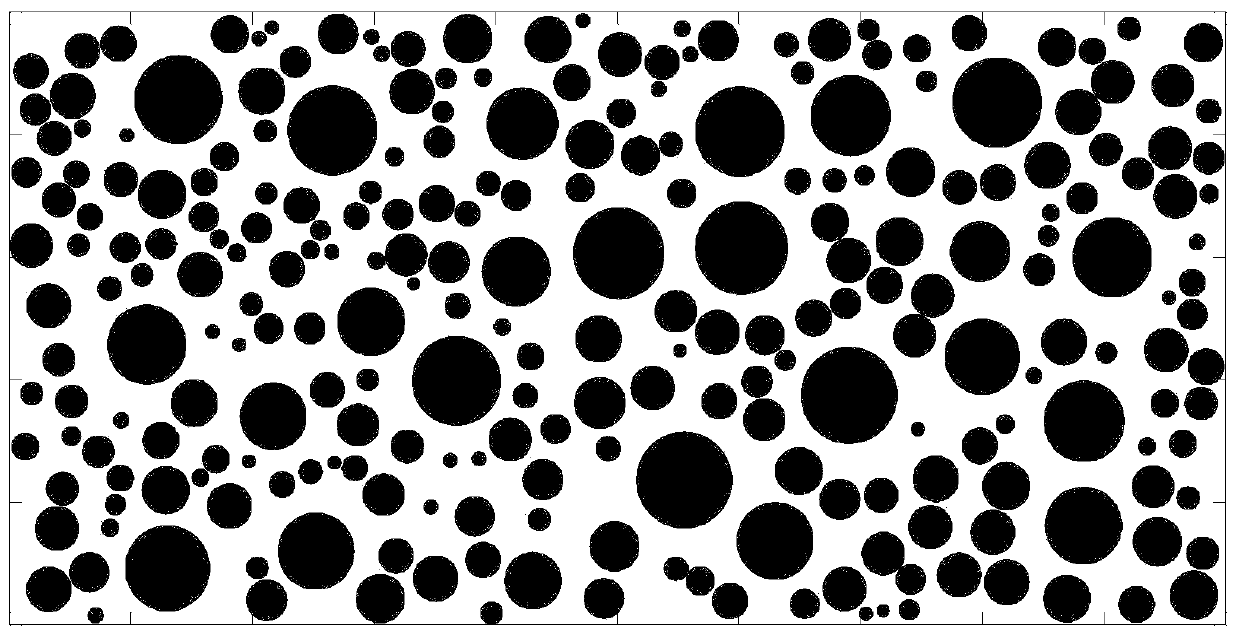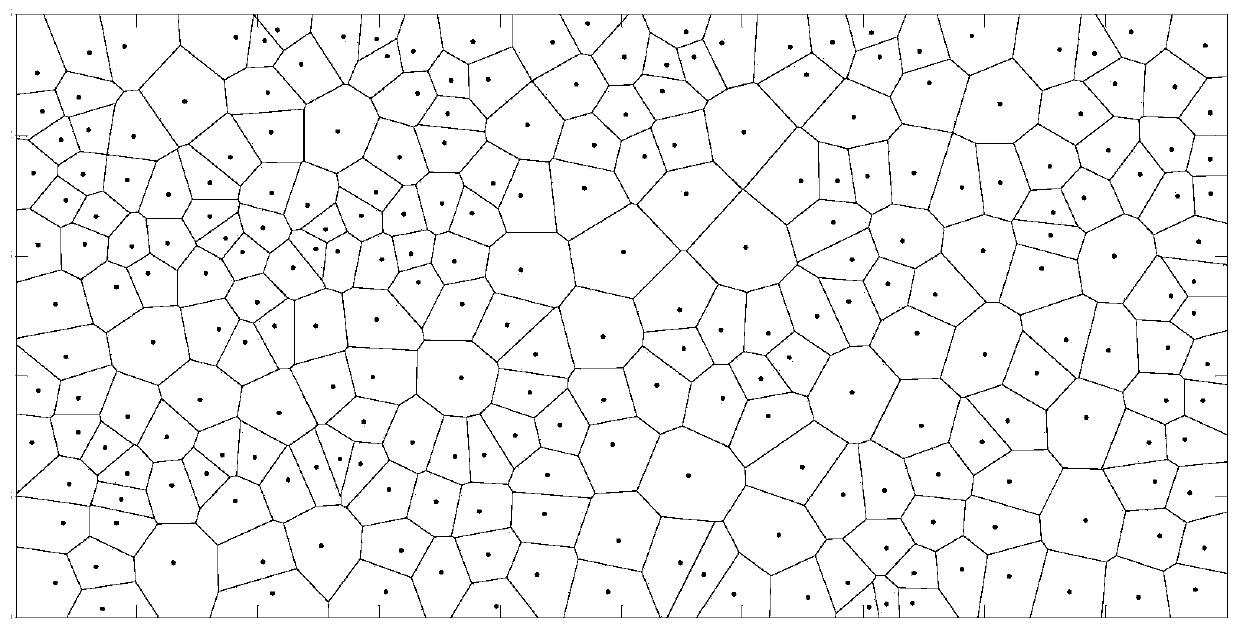Method for quickly generating two-dimensional random aggregate model of concrete with pebbles and crushed stones
A concrete and aggregate technology, applied in instruments, geometric CAD, calculation, etc., can solve the problems of long, time-consuming from several minutes to dozens of minutes, difficult to achieve parallel processing, high computer heating and noise, etc., and achieves low CPU consumption. , The calculation time is short, and the shape of the aggregate is realistic.
- Summary
- Abstract
- Description
- Claims
- Application Information
AI Technical Summary
Problems solved by technology
Method used
Image
Examples
Embodiment 1
[0035] The purpose of this embodiment is to generate a concrete two-dimensional random aggregate model with only pebbles, which belongs to a special case of the method of the present invention.
[0036] 1. According to the given aggregate gradation and concrete section size, wherein the aggregate gradation is two-level, the aggregate particle size range is 5~20mm and 20~40mm, and the concrete section size is 500mm×250mm, using Monte Carlo The method generates a two-dimensional circular random aggregate model diagram, and finally obtains the coordinates and area of the center point of each circular aggregate, see figure 2 , the number of round aggregates is 253;
[0037] 2. According to the center coordinates of all aggregates in the circular random aggregate model diagram, generate a Thiessen polygon diagram with boundaries, see image 3 ;
[0038] 3. Using the vertices of each Thiessen polygon as control points, generate a closed B-spline curve in parallel and calculate ...
Embodiment 2
[0042] The purpose of this embodiment is to generate a concrete two-dimensional random aggregate model with only gravel, which belongs to another special case of the method of the present invention.
[0043] 1. According to the given aggregate gradation and concrete section size, wherein the aggregate gradation is two-level, the aggregate particle size range is 5~20mm and 20~40mm, and the concrete section size is 500mm×250mm, using Monte Carlo The method generates a two-dimensional circular random aggregate model diagram, and finally obtains the coordinates and area of the center point of each circular aggregate, see figure 2 , the number of round aggregates is 253;
[0044] 2. According to the center coordinates of all aggregates in the circular random aggregate model diagram, generate a Thiessen polygon diagram with boundaries, see image 3 ;
[0045] 3. Using the vertices of each Thiessen polygon as control points, generate a closed B-spline curve in parallel and calcula...
Embodiment 3
[0049] The purpose of this embodiment is to generate a concrete two-dimensional random aggregate model mixed with pebbles and crushed stones, which belongs to the conventional situation of the method of the present invention.
[0050] 1. According to the given aggregate gradation and concrete section size, wherein the aggregate gradation is two-level, the aggregate particle size range is 5~20mm and 20~40mm, and the concrete section size is 500mm×250mm, using Monte Carlo The method generates a two-dimensional circular random aggregate model diagram, and finally obtains the coordinates and area of the center point of each circular aggregate, see figure 2 , the number of round aggregates is 253;
[0051] 2. According to the center coordinates of all aggregates in the circular random aggregate model diagram, generate a Thiessen polygon diagram with boundaries, see image 3 ;
[0052] 3. Using the vertices of each Thiessen polygon as control points, generate a closed B-spline ...
PUM
 Login to View More
Login to View More Abstract
Description
Claims
Application Information
 Login to View More
Login to View More - R&D
- Intellectual Property
- Life Sciences
- Materials
- Tech Scout
- Unparalleled Data Quality
- Higher Quality Content
- 60% Fewer Hallucinations
Browse by: Latest US Patents, China's latest patents, Technical Efficacy Thesaurus, Application Domain, Technology Topic, Popular Technical Reports.
© 2025 PatSnap. All rights reserved.Legal|Privacy policy|Modern Slavery Act Transparency Statement|Sitemap|About US| Contact US: help@patsnap.com



